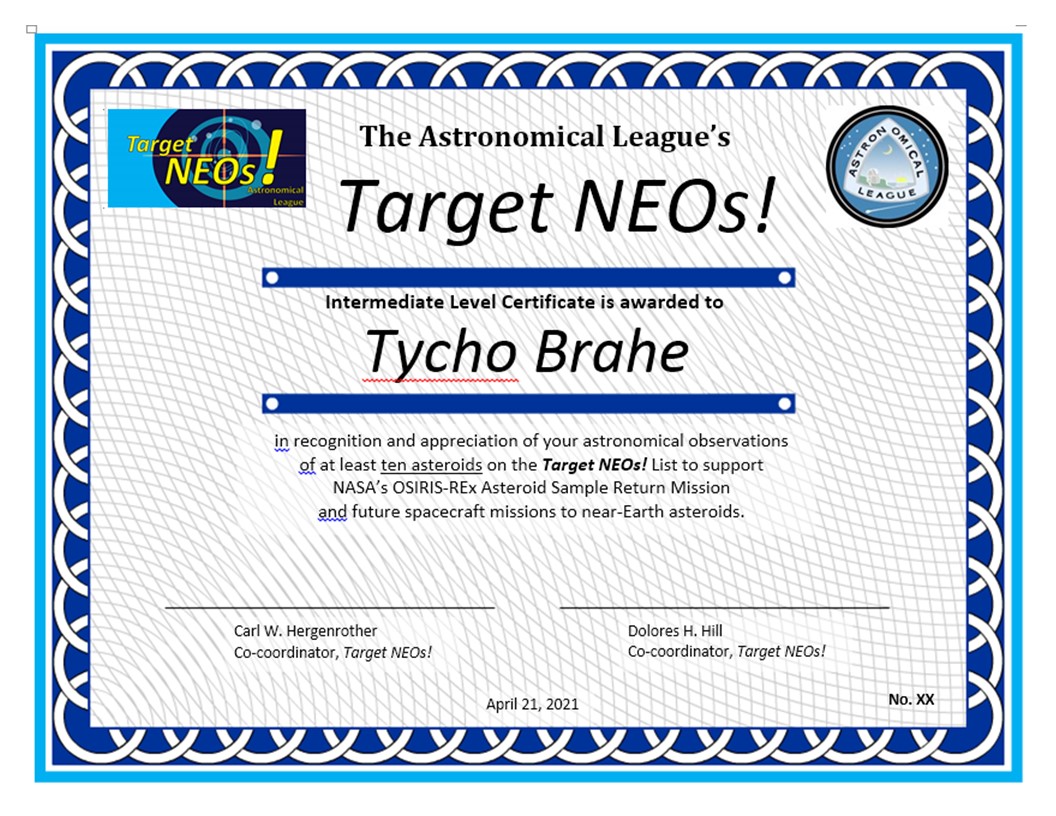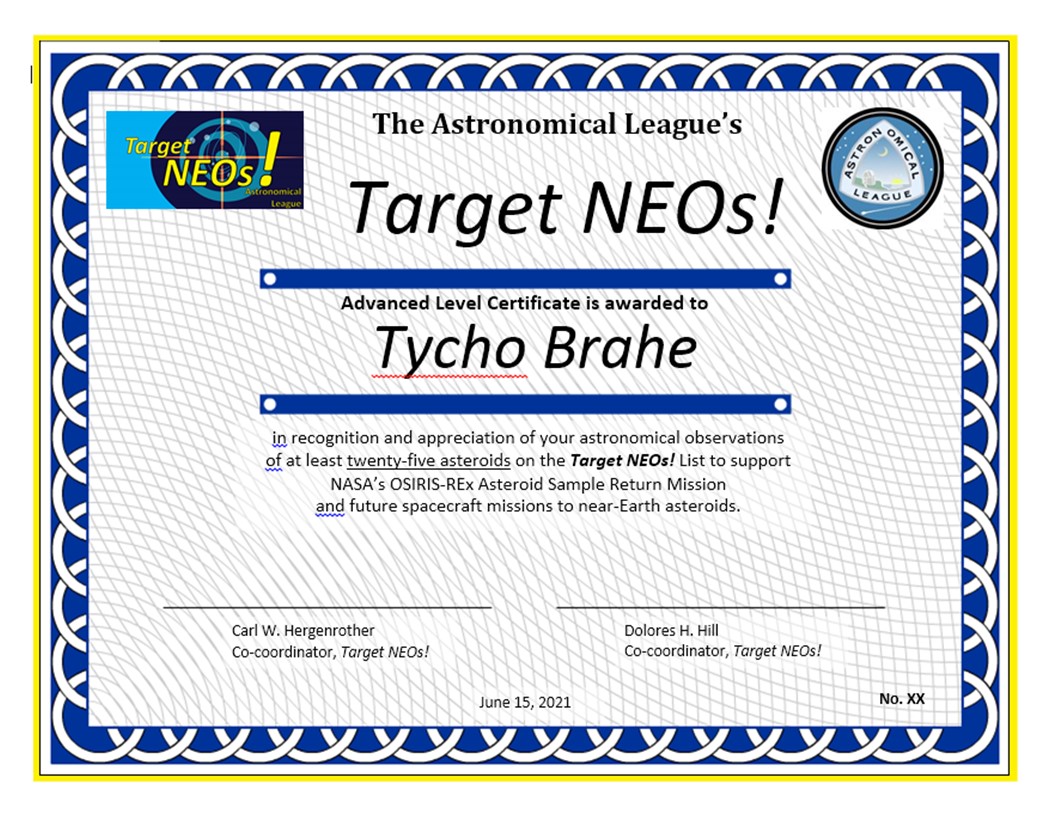Target NEO Observing Program Coordinators:Dolores Hill Carl Hergenrother |
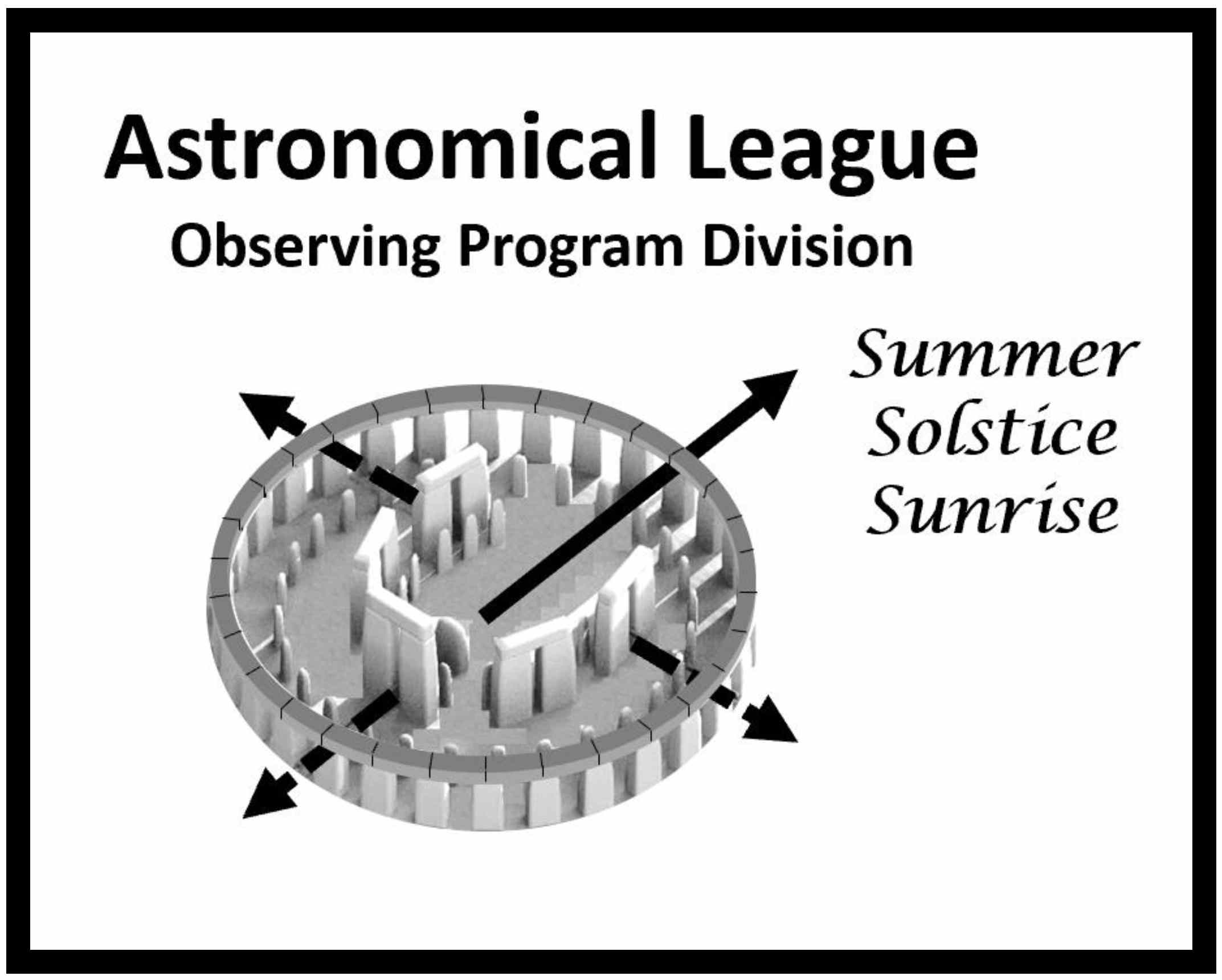 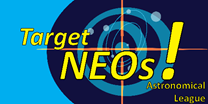 |
IntroductionTarget NEOs!* is an exciting opportunity for amateur astronomers to participate in a long-term citizen science project that will contribute to basic scientific understanding of near-Earth objects (NEOs). Observers collect data about asteroids on a selected list and submit images and corresponding reports. These observations support spacecraft missions in progress and aid future mission designers and scientists. Citizen scientists’ astrometry and photometry data will enable scientists to test theoretical models about these objects to refine orbits and taxonomy. The observations, which are personally gratifying for the observer, represent important, real contributions to asteroid exploration. Some of the NEOs in this program are observable by 8-inch telescopes or larger equipped with CCD cameras. A larger telescope will allow more objects to be observed. Remote observing is welcomed, too. Many advanced amateur astronomers are highly skilled, possess large aperture telescopes equipped with research quality instrumentation, and are eager to engage in research-oriented activities. Your observations can complement professional observations by providing greater geographic coverage and creating larger data sets through more frequent observing. |
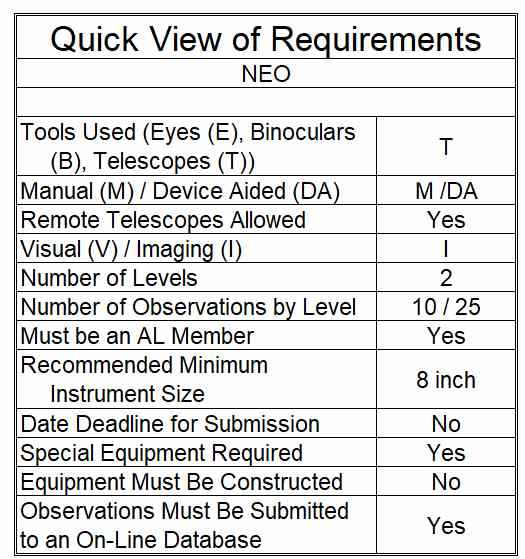 |
* Target NEOs! or “NEO ALOP” is the companion program that carries on the legacy of the OSIRIS-REx Target Asteroids! citizen science program.
Background InformationTarget NEOs! complements the AL Asteroid Observing Program and other asteroid programs: Target NEOs! is natural follow-on project for observers who have completed the League’s Regular and Gold Asteroid Certificates and, yet, can be attempted by observers who have not completed these programs. We encourage observers to refer the Astronomical League’s Asteroid Observing Guide and the links below for tips on how to observe asteroids. For more information: This program builds on the excellent work done by experienced observers for many years and other NASA NEO programs. We encourage observers continue to submit observations to these programs as well. |
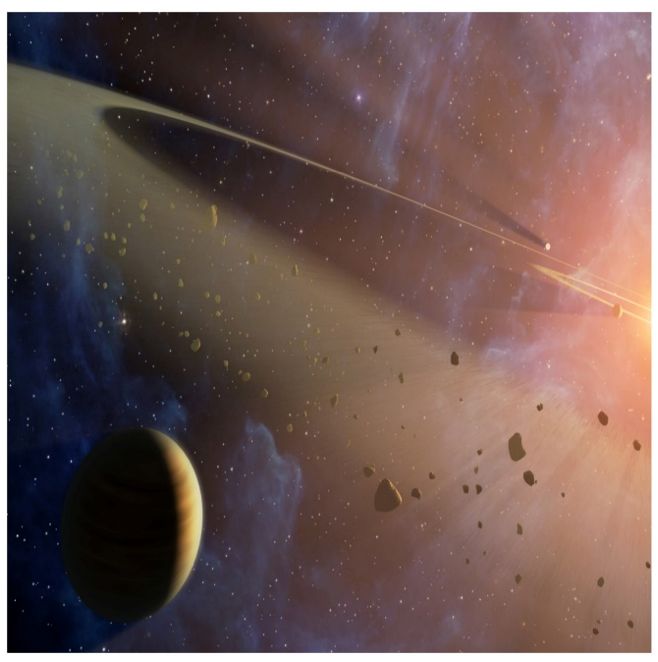
This artist’s illustration shows an asteroid belt full of rocky bodies of different sizes and compositions that orbit the Sun. Some of these are near-Earth objects (NEOs) that travel within 1.3 AU of Earth. Credit: NASA/JPL-Caltech |
The Targets!
“Target NEOs!” is built around a dynamic compilation of objects selected by Carl Hergenrother, OSIRIS-REx lead astronomer. He selects NEOs that are more than 200 meters in size and easily reachable by sample return spacecraft. It changes as new asteroids are discovered, spacecraft mission requirements change, and interesting flyby opportunities occur. Currently, there are more than 140 objects on the list. Some are as bright as 7th apparent magnitude asteroid (1) Ceres and range from 15 – 21.5 absolute magnitude (H) and approximately 0.2–6 kilometers in size. There will be ample opportunities for observers to attain the highest level of achievement over the course of several years. The current list of objects may be found here: (TNEO List).
How to get Started:
Contact the coordinators and request the Target NEOs! Observer Registration Form. This will allow you to receive updates and helpful information while you are working toward your award.
How to Report Observations:
When you are ready to submit observations, email at least three images of an asteroid on the list spanning a half hour interval and the corresponding astrometry/photometry report to the coordinators. Email the report (“MPC report”) to the International Astronomical Union’s Minor Planet Center at obs@cfa.harvard.edu. Note that many astronomy software programs will format your data for you and allow you to send these email reports from the program. Do not wait until you have observed 10 or 25 objects to submit your data. Submit your observations as you make them.
The suggested image file name is in the format:
Observer_Object_YYYYMMDD_HHMMSS_.FITS
For example: Hergenrother_101955Bennu_20120318_041510.FITS
Corresponding astrometry and photometry reports should be in “MPC format” described here:
http://www.minorplanetcenter.net/iau/info/ObsDetails.html
Requirements and Rules
This certification is available to members of the Astronomical League, either through their local astronomical society or as members at large. If you are not a member and would like to become one, check with your local astronomical society, search for a local society on the Astronomical League Website (click here), or join as a Member-At-Large in the AL Store.
Target NEOs! is dynamic and exciting! We invite you to take up the challenge! There are ample opportunities for observers to start with the intermediate level and to attain the highest level of achievement over the course of several years. This is one of the few AL observing programs in which you submit your observations as you make them rather than waiting until you have observed the minimum number of objects.
Intermediate Certificate and Advanced Certificate:
|
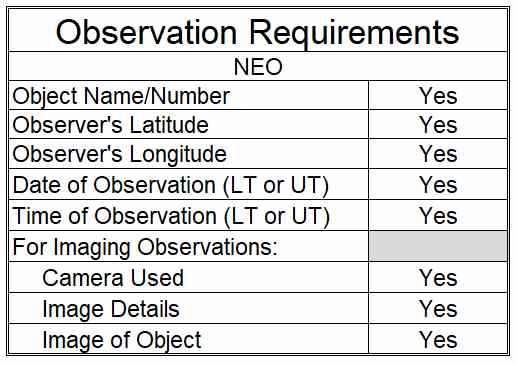 |
Submitting for Certification
Target NEO Observing Program Coordinators:Dolores Hill Carl Hergenrother |
 |
Notes:
Citizen Science: If you enjoyed this Observing Program, and look forward to doing more observations to submit to the national or international database, then we invite you to participate in the Astronomical League’s Citizen Science Program. This is an extension of this Observing Program and only requires you to do what you have been doing; observing and submitting those observations. For more information about this opportunity, please go to the web page: Citizen Science Program.
Observations consist of images and reports for photometry/astrometry (brightness/position).
To receive your certificate and/or award pin, send a summary of your observations that includes the list of NEOs observed and the dates to the coordinators. We will verify receipt of the observations and forward a certificate and/or pin to you or your society’s “Awards Coordinator”.




